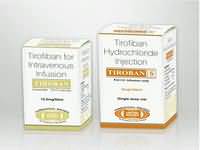Carvedilol

Carvedilol
CLINICAL USE
Beta-adrenoceptor blocker with alpha1-blocking action:
Hypertension, angina and heart failure DOSE IN NORMAL RENAL FUNCTION
Hypertension: 12.5–50 mg daily in single or divided dosesAngina: 12.5–25 mg twice daily Heart failure: 3.125–25 mg twice daily (50 mg twice daily if wt>85 kg) PHARMACOKINETICS
Molecular weight :406.5 %Protein binding :>98 %Excreted unchanged in urine : <2 Volume of distribution (L/kg) :2half-life – normal/ESRD (hrs) :6–10/Unchanged DOSE IN RENAL IMPAIRMENT
GFR (mL/MIN)
20 to 50 : Dose as in normal renal function 10 to 20 : Dose as in normal renal function <10 : Dose as in normal renal function DOSE IN PATIENTS UNDERGOING RENAL REPLACEMENT THERAPIES
CAPD :Unlikely dialysability. Dose as in normal renal function. Start with low doses and titrate according to response HD :Not dialysed. Dose as in normal renal function. Start with low doses and titrate according to responseHDF/high flux :Unknown dialysability. Dose as in normal renal function. Start with low doses and titrate according to responseCAV/VVHD :Unlikely dialysability. Dose as in normal renal function. Start with low doses and titrate according to response IMPORTANT DRUG INTERACTIONS
Potentially hazardous interactions with other drugsAnaesthetics: enhanced hypotensive effect Analgesics: NSAIDs antagonise hypotensive effectAnti-arrhythmics: increased risk of myocardial depression and bradycardia; increased risk of bradycardia, myocardial depression and AV block with amiodaroneAntibacterials: concentration reduced by rifampicinAntidepressants: enhanced hypotensive effect with MAOIsAntihypertensives: enhanced hypotensive effect; increased risk of withdrawal hypertension with clonidine; increased risk of first dose hypotensive effect with post-synaptic alpha-blockers such as prazosinAntimalarials: increased risk of bradycardia with mefloquineAntipsychotics enhanced hypotensive effect with phenothiazinesCalcium-channel blockers: increased risk of bradycardia and AV block with diltiazem; hypotension and heart failure possible with nifedipine and nisoldipine; asystole, severe hypotension and heart failure with verapamilCiclosporin: increased trough concentration, reduce dose by 20% in affected patientsDiuretics: enhanced hypotensive effect Moxisylyte: possible severe postural hypotensionSympathomimetics: severe hypertension with adrenaline and noradrenaline and possibly with dobutamineTropisetron: increased risk of ventricular arrhythmias – use with caution ADMINISTRATION
Reconstition
– Route
Oral Rate of Administration
–Comments
– OTHER INFORMATION
First pass elimination of 60–75% following oral administration
See how to identify renal failure stages according to GFR calculation
See how to diagnose irreversible renal disease
Home









